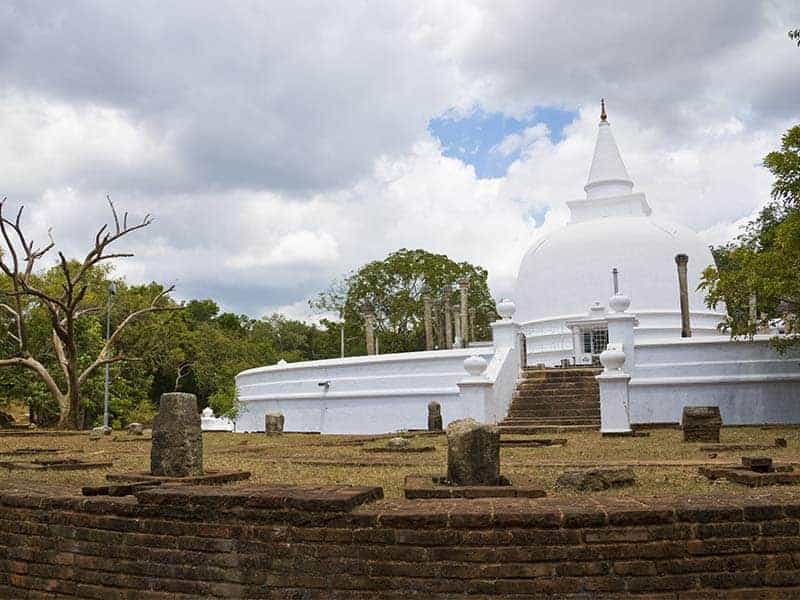Commissioned by King Valagamba of Anuradhapura in the 1st Century BC, the Lankaramaya monastic complex includes a very well-renovated stupa among other things. The king ruled the country during an exceptionally troubled time, full of uncertainty thanks to South Indian invasions and revolutions by the Jain and Brahman community, disgruntled by the fact that the new Buddhist regime was ignoring their faiths. Thus Valagamba, the youngest son of Saddhatissa-and nephew of Dutugemunu-had to go into hiding with his family many times and launch sporadic attacks and quick skirmishes as opposed to actually fighting the invaders head-on.
He had a few chances to get back onto the throne, but he ended up having to leave just as quickly whenever the invader was too powerful for him to handle. One of his hideaways was the area known as Silasobha Kandaka, and the original name of this temple was, indeed, Silasobha Kandaka Chetiya. In its prime, this monastic complex must have been a true wonder, with its great stupa as the centerpiece, raised up on a high platform in a circular courtyard of sand about 1332 feet in diameter, and surrounded by a low wall. The ensemble in its entirety, includes the ubiquitous moonstones and erect guardian stones. The most compelling feature that it used to include was an eighty-eight-columned vatadage, albeit nowadays barely any of the original pillars remain, even though the centerpiece is the great blindingly white stupa. We know that as with every protective building, or vatadage, this one would have supported a great wooden roof. This is quite a surprise considering the sheer size of Lankaramaya. In diameter, the stupa is forty-five feet across.
One of the features of this centerpiece is the Bo leaves carved just beneath the larger rectangle atop the body of the monument, the devatha kotuwa as it is known in the local language. The leaves are still clearly visible but they are more similar to scalloped, raised ridges to the casual observer. Beside the stupa, and part of the Lankaramaya monastic complex itself is a wonderful work of hydraulics, the Elephant Pond. Also known as Eth Pokuna, it is a connection between this temple and Valagamba’s masterpiece, the mighty Mahayana center of Abhayagiriya which is still overgrown with vegetation. Both the Lankarama and Abhayagiriya monastic complexes got their water supply from this tank, thus attesting to the wonderful plumbing systems of the ancient Sri Lankans. It is ten meters deep, fifty meters across, and one hundred and fifty-three meters long, and is surrounded by a series of steps that reach into the pond. It gets its own supply from underground pipes reaching Periyakulam Reservoir nearby and from the rain itself.
Written by Vasika Udurawane for Travel Lanka Compass



0 Comment